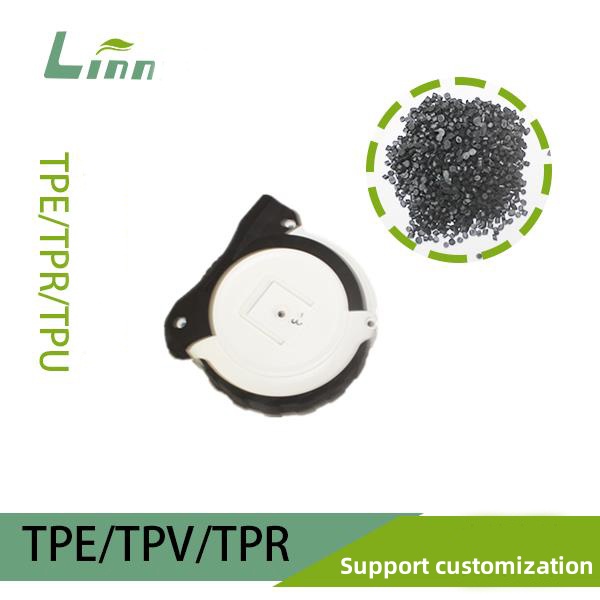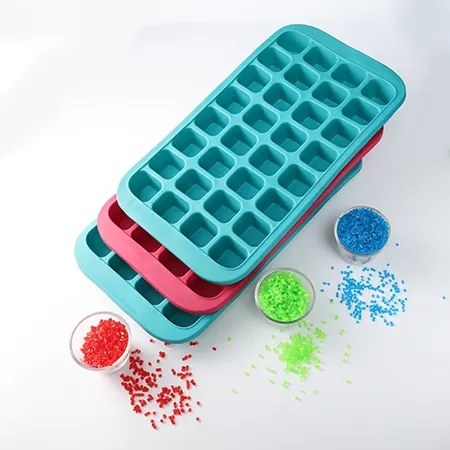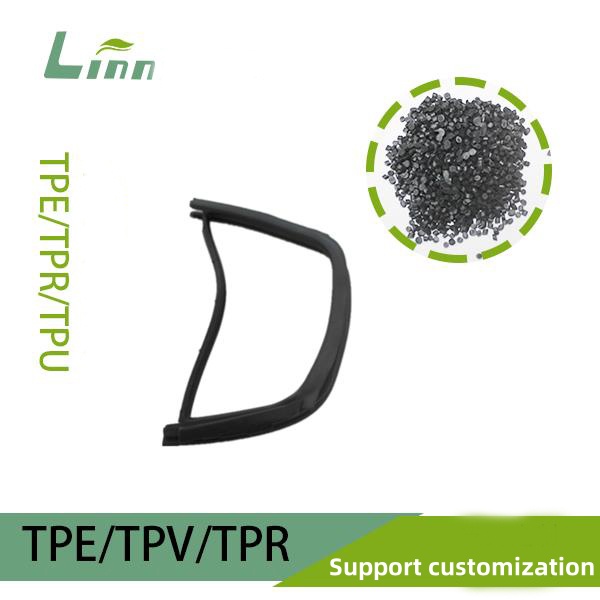Having been immersed in the home materials industry for years, I often get asked about the materials used in mattresses, shoe insoles, or other daily necessities. One question that comes up frequently is, “Are TPR and latex the same thing?” At first glance, TPR and latex might seem similar—both are used in soft, elastic products like shoe soles, mattresses, or toys. However, they are entirely different materials with unique properties and uses. Today, I’ll break down the differences between TPR and latex to help you understand their essence, pros and cons, and ideal applications.

What Are TPR and Latex?
To determine whether TPR and latex are the same, let’s start with their definitions.
TPR, or Thermoplastic Rubber, is a synthetic material that combines the elasticity of rubber with the processability of plastic. It belongs to the family of thermoplastic elastomers (TPEs) and is known for its flexibility and moldability. TPR can be softened by heat and reshaped repeatedly, making it cost-effective and widely used in products like shoe soles, toys, and seals.
Latex, on the other hand, can be natural latex, derived from the sap of rubber trees, or synthetic latex, produced through chemical processes. Natural latex is prized for its high elasticity, breathability, and eco-friendliness, making it a popular choice for high-end mattresses and pillows. Synthetic latex mimics the properties of natural latex but is less expensive, though it may fall short in certain performance aspects.
In short, TPR is a fully synthetic material combining plastic and rubber, while latex can be natural or synthetic, with rubber as its core component. They differ significantly in raw materials, production processes, and applications.
How Do TPR and Latex Differ?
To make the differences clearer, I’ve created a comparison table highlighting their key characteristics:
| Property | TPR | Natural Latex | Synthetic Latex |
|---|---|---|---|
| Raw Material | Thermoplastic elastomer, petroleum-based | Rubber tree sap | Chemically synthesized rubber |
| Eco-Friendliness | Partially recyclable, energy-intensive production | Eco-friendly, biodegradable | Less eco-friendly, petroleum-based |
| Elasticity & Comfort | Moderate elasticity, firmer, highly durable | High elasticity, soft, body-conforming | Good elasticity, less comfortable than natural latex |
| Breathability | Average, tends to retain heat | Excellent breathability, ideal for long-term use | Moderate breathability, less than natural latex |
| Price | Low cost, budget-friendly | Higher cost, especially high-purity natural latex | Moderate cost, cheaper than natural latex |
As the table shows, TPR and latex differ significantly in raw materials, performance, and cost. Let’s dive deeper into these differences to understand how they perform in real-world use.
1. Raw Materials and Production Processes
TPR is a fully synthetic material derived from petroleum-based compounds and processed through high-temperature techniques. Its production is similar to that of plastics, allowing for rapid molding through injection or extrusion. This makes TPR highly cost-effective and suitable for mass production.
Latex, however, has a different story. Natural latex is extracted from the sap of rubber trees and processed through complex steps like foaming and curing, which are time-consuming and limited by raw material availability. Synthetic latex, while also petroleum-based, is designed to replicate the molecular structure of natural latex, offering a more affordable alternative. However, its environmental impact and comfort level are often inferior to natural latex.

2. Performance and User Experience
The performance differences between TPR and latex directly influence their applications.
Elasticity and Support:
Latex, particularly natural latex, is renowned for its high elasticity and soft, body-conforming support. For example, natural latex mattresses adapt to the body’s curves, providing even support, making them ideal for people with back or joint pain. TPR, while elastic, offers a firmer, more rigid support, better suited for applications requiring durability, such as shoe soles or industrial seals.
Breathability and Heat Dissipation:
Natural latex excels in breathability due to its porous structure, keeping you cool even during hot summers. TPR, however, has poorer breathability and can feel stuffy with prolonged use. This is why TPR is rarely used in bedding but is common in shoe materials or toys.
Durability:
TPR is highly durable and resistant to wear and aging, making it ideal for outdoor or high-use products. Latex, especially natural latex, is also durable but more sensitive to sunlight and oxidation, requiring careful storage to avoid moisture and direct light.
3. Price and Value for Money
Cost is a major consideration for many. TPR is significantly cheaper due to its low production costs, making it a go-to for budget-friendly products. For instance, a pair of TPR shoe soles might cost just a few dollars, while latex insoles could run into the tens or hundreds. Natural latex, due to its scarce raw materials and complex processing, is often pricier—high-quality natural latex mattresses can cost thousands. Synthetic latex sits in the middle price-wise.
Applications of TPR and Latex
Now that we’ve covered their differences, let’s explore how TPR and latex are used in everyday life to help you decide which material suits your needs.
Common Uses of TPR
TPR’s affordability and durability make it a staple in various applications:
Footwear: Many athletic shoe soles or insoles use TPR due to its wear resistance, lightweight nature, and low cost.
Toys: TPR is common in children’s toys because it’s soft and easily molded into various shapes.
Industrial Products: Items like seals and grips often use TPR for its durability and moldability.

Common Uses of Latex
Latex, particularly natural latex, shines in high-quality home goods due to its comfort and eco-friendliness:
Bedding: Latex mattresses and pillows are the gold standard for comfort, offering superior support and breathability to enhance sleep quality.
Insoles: High-end shoe insoles often use latex, especially natural latex, for better cushioning and comfort.
Medical Supplies: Latex’s softness and antibacterial properties make it ideal for medical gloves, bandages, and similar products.
How to Choose: TPR or Latex?
When deciding between TPR and latex, your choice depends on your specific needs and budget. Here are some practical tips to guide you:
If You’re After Affordability:
TPR is the more economical option. For example, if you’re buying durable athletic shoes or budget-friendly daily items, TPR-based products are reliable and cost-effective.
If Comfort and Health Are Priorities:
Natural latex is the better choice, especially for bedding. Latex mattresses and pillows offer superior sleep quality, ideal for those with high sleep standards, allergies, or back issues. Synthetic latex can be a budget-friendly compromise if natural latex is too expensive.
If Eco-Friendliness Matters:
Natural latex is biodegradable and environmentally friendly, while TPR and synthetic latex have a larger environmental footprint due to their petroleum-based production. For greener choices, opt for natural latex.
Consider the Use Case:
For durable, wear-resistant items like shoe soles or toys, TPR is ideal. For comfort and breathability in bedding, latex is the clear winner.

Common Misconceptions and Tips
Over the years, I’ve noticed several misconceptions about TPR and latex. Here are some clarifications and tips to avoid pitfalls:
Misconception 1: TPR and Latex Are the Same
Many assume TPR and latex are interchangeable because both are elastic. In reality, TPR is a plastic-rubber hybrid, while latex is rubber-based, with entirely different compositions and properties.
Misconception 2: All Latex Products Are Natural
Many products labeled “latex” are actually synthetic or blended with other materials. Always check the label to confirm 100% natural latex if that’s what you’re after.
Misconception 3: TPR Is Not Eco-Friendly
While TPR’s production is energy-intensive, some TPR materials are recyclable. Look for products labeled as recyclable to reduce environmental impact.
Tip: Latex Allergy Concerns
Natural latex can cause allergic reactions in some people due to its proteins. If you have a latex allergy, consult a doctor or test a small area of skin before purchasing.
My Personal Experience and Recommendations
As someone in the industry, I’ve used both TPR and latex products extensively. My mattress at home is made of natural latex, and even after years of use, it remains soft, comfortable, and breathable, keeping me cool in the summer. I also own a few pairs of TPR-soled athletic shoes, which have held up remarkably well after two years of heavy use.
Once, while helping a friend choose a latex pillow, I noticed many products were marketed as “latex” but were actually synthetic or blended materials. My advice? Always check the product details and opt for brands with certifications like GOLS (Global Organic Latex Standard) for natural latex. While these products are pricier, they’re worth it for the peace of mind.
For TPR, I find it unbeatable in certain scenarios. My TPR-soled hiking shoes, for instance, are lightweight and grippy, perfect for outdoor adventures. If your budget is tight, TPR products are a fantastic value.

Conclusion
TPR and latex may seem similar at first, but they are distinct in their composition, performance, and applications. TPR excels in affordability and durability, making it ideal for shoe soles, toys, and industrial products. Latex, especially natural latex, stands out for its comfort and eco-friendliness, particularly in bedding. Your choice depends on your budget, intended use, and environmental priorities.
I hope this article has clarified the differences between TPR and latex, making your next purchase decision easier. If you have more questions, feel free to drop them in the comments—I’ll do my best to help!
Related Q&A
1. Which is better for mattresses: TPR or latex?
Natural latex is the superior choice for mattresses due to its softness, breathability, and even support, ideal for high-quality sleep. TPR’s poor breathability makes it unsuitable for mattresses.
2. How can I tell the difference between natural and synthetic latex?
Natural latex has a faint rubbery smell, a milky or pale yellow color, and fine pores. Synthetic latex has a stronger chemical odor, a more uniform color, and is cheaper. Check for “100% natural latex” or certifications on the label.
3. Are TPR shoe soles slippery?
TPR sole grip depends on the formula and tread design. High-quality TPR soles with specialized patterns offer good traction, but lower-end products may be slippery. Choose designs with anti-slip features.
4. How do I care for latex products?
Keep natural latex products away from direct sunlight and moisture, and air them out regularly (avoid sun exposure). Clean with a damp cloth and avoid chemical cleaners.
5. Is TPR recyclable?
Some TPR materials are recyclable, depending on the manufacturer’s process. Look for products labeled as recyclable to minimize environmental impact.





